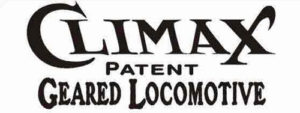 A 1902 Climax Manufacturing Co. narrow gauge geared steam locomotive that has spent the last 118 years in Alaska is on its way back to the town where it was built — Corry, Pa.
A 1902 Climax Manufacturing Co. narrow gauge geared steam locomotive that has spent the last 118 years in Alaska is on its way back to the town where it was built — Corry, Pa.
Disassembled and loaded in a container, the 3-foot gauge engine was shipped 1,400 miles from Whittier, Alaska, to the U.S. Lower 48 aboard the barge Whittier Provider. As of Friday morning, the barge was docked at the Port of Seattle, where the container is to be offloaded and await truck transfer to Corry. That is expected to occur over the next few weeks, according to Carl Wassink, vice chairman of the nonprofit group Corry RAILS (Rail And Industrial Legacy Society).
The 15-ton engine, Climax shop No. 313, is of the A-type design, including a cab that covers most of the boiler to resemble a boxcar. When it arrives in Corry, it will be housed in a former lumber storage facility just blocks from where it was built. While about two-thirds of the former Climax factory is gone, the remaining portion — still used for manufacturing — was the assembly room where locomotives were completed.
Known as A-313 for the type and builder’s number, the engine was built for use in the Nome Gold Rush but was abandoned in place at Council, Alaska, about 1910. Along the way, it had worked for a succession of railroads, including the Wild Goose Railroad and the Golovin Bay Railroad.
According to Wassink, Corry RAILS purchased the engine on Sept. 1 from the estate of Keith Christenson through his oldest son, Eric Christenson. Since the elder man’s death in 2014, the engine has been stored at a gravel pit near Eagle Lake, Alaska. Among the volunteers helping to arrange the inspection and transfer was Patrick Durand of the project restoring Alaska Railroad No. 557, a U.S. Army Transportation Corps 2-8-0.
After the group inventoried parts and reloaded the engine, the container was trucked by Lynden Transport to Anchorage, where it was transloaded onto an Alaska Railroad train for Whittier. At that point, it was transloaded again onto the barge for Seattle. Lynden donated the cost of transportation from Anchorage to Seattle.
To this point, all funds raised by Corry RAILS have been private donations, including four- and five-figure gifts from service, labor, and fraternal organizations. Ultimately, the group would like to restore the engine to operation.












